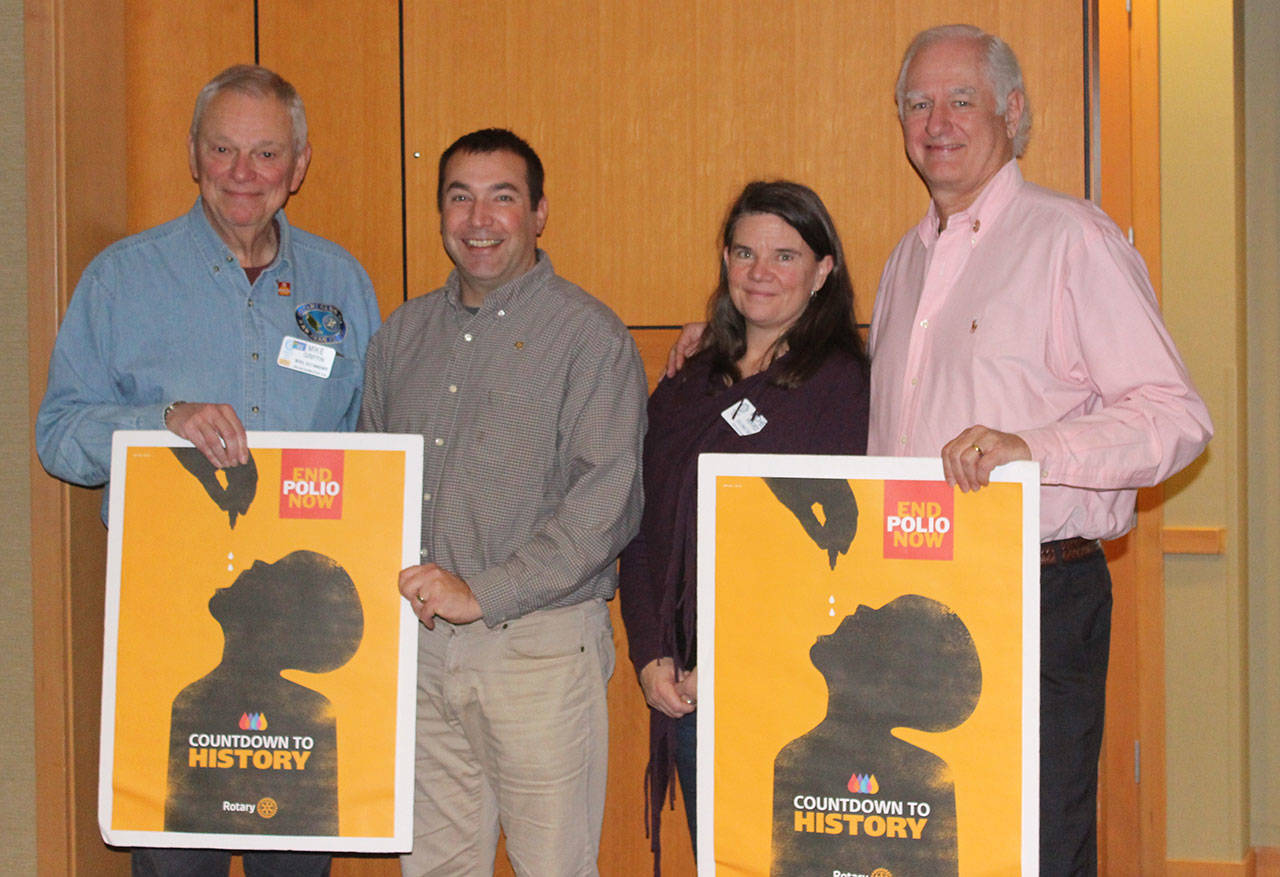For Mike Griffin, his cousin’s polio has always been a part of life.
In the early 1950s, Griffin would walk past rows of iron lungs in a hospital to visit Laura Piscazzi, locked in her own rigid case from the neck down. His cousin couldn’t move for the 18 months she stayed in the chamber that helped her breathe. To see visitors, Piscazzi would look at a mirror above her head.
“I did not know her before she had polio,” Griffin said. “My total recollection of her was either in an iron lung or progressing through various stages of care to manage the paralysis that she suffered.”
For the last 40 years, cases like Piscazzi’s have disappeared in America. When a vaccine was first invented in the mid-50s, wealthier countries, like the United States, were able to spread the medicine and eliminate the virus locally. Yet, today, the threat is alive in three countries: Afghanistan, Nigeria and Pakistan.
Griffin and other members of the Rotary Club of San Juan Island are working to eradicate polio and stop the virus that has affected millions worldwide. If they are successful, polio would be only the second disease in history to be completely wiped out, after smallpox.
Polio is a deadly, infectious virus that commonly affects those under age 5. The disease typically spreads through contaminated water and attacks the nervous system.
Griffin’s cousin was diagnosed in 1953, a time when thousands of polio cases were reported, annually, in the United States. Just a year before the disease struck Piscazzi, roughly 60,000 cases were reported in America. Of those infected, about 20,000 were left paralyzed, while roughly 3,000 died.
“In the early 50s, it was a worldwide pandemic,” said Griffin. “People were generally scared.”
The fear led Griffin’s family to forbid his older cousins from swimming in public pools. It was in the contaminated waters of a community pool where his family believed his cousin contracted the disease when Griffin was 4 years old.
Today, said local Rotary club member Adam Eltinge, that fear could be resurrected if the organization’s work ended.
“If we quit now, in the next 10 years, 200,000 people per year will be infected,” he said. “It’s that fast.”
According to the Rotary’s website, the organization started to help eradicate polio in 1979, the same year the disease was eliminated in the United States. About a decade later, Rotary International and the World Health Organization launched the Global Polio Eradication Initiative. At the time, there were 350,000 polio cases across the globe, but by 2017, there were only 22 confirmed cases.
According to Eltinge, Rotary International Club members, with the help of other world health organizations, map infected areas, as well as residents’ migration patterns to document the unvaccinated nations. These databases could help end other widespread global epidemics, like hepatitis, in the future, he added.
Since 1988, 99.9 percent of polio cases have been reduced worldwide, thanks to the international club, as a whole. The local club has donated over $70,000 to ending polio since the branch was formed in 2003. Each year, Griffin said the island’s Rotary club donates at least $3,000, which covers about 900 vaccinations. Contributions come from private gifts, as well as sponsorships and donations through the club’s annual sports car show called the Concours d’Elegance, which is co-produced by the Sports Car Club of the San Juan Islands.
“Typically people resonate pretty positively with the idea of eradicating polio,” said Griffin. “Most adults most certainly have recollections of it or know friends or family members who had it.”
Griffin’s own efforts stem from witnessing the effects, first hand. His cousin lived in an iron lung to provide artificial respiration after the disease attacked her ability to breathe on her own. She endured severe scoliosis and had metal rods placed down her spine. To support her torso, Piscazzi wore a chest brace and later had a tracheotomy to help her breathe through a modern respirator.
In spite of the complications, Piscazzi married, birthed two healthy girls and lived a full life until she died at 65 from breast cancer. It was her perseverance, said Griffin, that inspires his work today.
“It gives me a significant sense of satisfaction that I am able to, in some small way, help eradicate the disease and be part of an organization dedicated to leading a global effort,” said Griffin. “A world without polio will truly be an accomplishment for humankind.”
Donate to eradicate Polio at www.my.rotary.org/en/take-action/end-polio.



